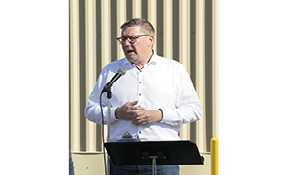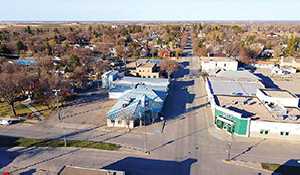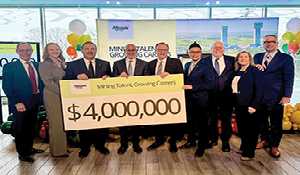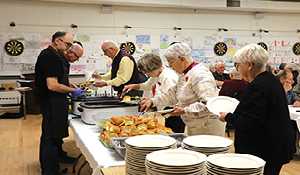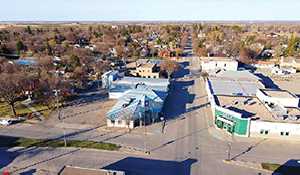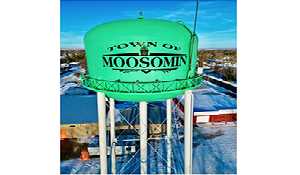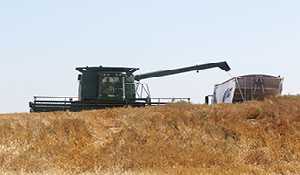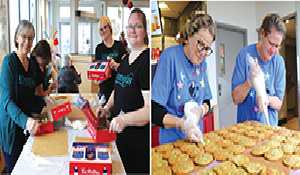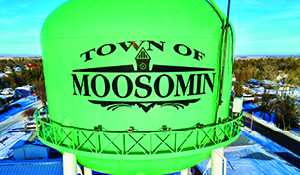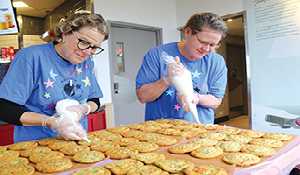MOU signed on economic development
Economic Development Regina and CBA
May 23, 2024, 10:43 am
Kevin Weedmark


At the Bioeconomy Investment Forum in Regina last week, Economic Development Regina signed a Memorandum of Understanding with the Community Builders Alliance and the Hebert Group.
The MOU is part of a focus on the bioeconomy that Economic Development Regina expects will create more than $1.8 billion in economic activity and create 4,100 jobs in southern Saskatchewan by 2027
“Regina’s position as a hub for agribusiness excellence, coupled with our network of innovative partners and access to resources, supports our readiness to expand our bioeconomy sector,” Regina Mayor Sandra Masters said. “By embracing these opportunities, we anticipate job creation and robust economic growth as we continue to establish our city as a leader in this transformative industry.”
“Agriculture has immense opportunities ahead in both production and value-added agriculture,” said Kristjan Hebert, President of the Hebert Group and an executive member of the Community Builders Alliance. “To fully capture this potential collaboration is an essential ingredient. The Hebert Group and the Community Builders Alliance look forward to working together with Economic Development Regina to identify key opportunities in southeast Saskatchewan and the GRA. These opportunities create projects that translate into increased investment, job creation and community services—all things that help our cities and rural communities, such as Moosomin, thrive.”
The road to the MOU
How did the discussions start with Economic Development in Regina?
“Chris Lane, the CEO of Economic Development in Regina, used to be the CEO of Agribition and that’s how we got to know Chris pretty well,” explains Hebert. “The neat thing about Chris is that he’s very pro-agriculture and he’s doing a great job with Economic Development Regina (EDR) so obviously the first thing we did with him is (Moosomin EDO) Casey (McCormac) went up and job shadowed with him, or worked with him, for a week because of our relationship that we built with him, which is great.
“So all along we’ve been in discussions around an MOU (Memorandum of Understanding) for the Moosomin area and Regina to create this Highway 1 corridor, in that everything they want to build in Regina when it comes to transportation logistics and value-added, is grown in the Moosomin area, whether that be with agriculture, energy or mining.
“We’ve got farmers who use IJack for an example and Nutrien, and so that’s where the discussions happened. They’ve never done one before so they’ve kind of been ongoing for six to nine months.
“Then when they decided to have this bioeconomy forum, it’s all tied to the fact that Regina just got a AA rating when it comes to economy investment opportunities. It’s coming out this summer, so they had this forum, and it seemed like a very good time to have these discussions more in depth around, ‘How could Moosomin and area be involved?’ No different than how Yorkton and area could be involved with their canola crush plants.
“So that’s what led to the discussions—we want to have a free flow of information and ideas because a lot of the investment ideas for our province go to Regina first. One, because of the city, and two, because of the government, and in a lot of cases our area could be a significant player in a lot of those ideas but the ideas don’t funnel to us.
“So really what we’ve created now is a communication corridor between Economic Development Regina and the Community Builders Alliance (CBA) to evaluate opportunities and how we could be important in it. That could be something as simple as signing up some canola or wheat acres from down here and it could be as major as them needing another canola crush plant or needing wheat or a flax straw plant as part of the biochar industry, and why are we shipping it from our area to Regina? Let’s build the plant here and then ship the value-added to Regina.
“We have had these discussions around the pretty unique opportunity for Moosomin that Nutrien’s power plant has come online for extra power, we have good natural gas, we have good water, we have Highway 1 and CP Rail right here and we have CN Rail in Fairlight. So it’s a pretty unique opportunity for this type of area to really be in union and collaboration with Regina.”
Communication a key to MOU
Hebert says communication is a big part of what makes up the MOU.
“In stage one, the CBA actually got a grow partner membership with the EDR as part of the MOU. So in other words we are going to get shared stats information, all of the research they do on what they’re working on, and then we’re going to have a set communication platform to have idea generation and sharing with themselves and ourselves. Then hopefully the first step will be a collaborative project that we start to move forward on.”
What does he see as some of the potential benefits of the MOU?
“The bigger the city—I don’t want to say the faster they are, but the more organized they are when it comes to economic development because they have a bigger budget for plans,” he says. “I think Yorkton has done a phenomenal job to become the crush plant capital of the world because they had some really easy buttons on regulation and policy around there and got ready for it. They also have people out specifically as champions trying to get projects there and so does Regina.
“So I think if we could have the proper communication so that Regina completely understand what Moosomin and area is ready for, they already know all of the products we have, but what we’re ready for and how, logistically, we could be the place to help them out on it—to really create a corridor between us and them for the products and value-added—specifically in agriculture, energy and mining.
“You know, the sky is the limit, whether it’s holding facilities for crush plants. I think biochar is something that you’re seeing a lot because it’s becoming a pretty big product in the steel and cement industries. As you move to this sustainable world that everyone wants, the neat part is the Global Institute of Food Security just released a report a couple of months ago stating that Saskatchewan commodities, specifically wheat, canola, peas, lentils, but including potash and oil, are the lowest carbon emissions in the country—not only in the country but in the world.
“So arguably the world should buy everything from Saskatchewan and we shouldn’t only export them commodities, we should also export them our knowledge and innovation for them to catch up, and this is a way for us to grab that opportunity.”
Hebert Group is also involved in the MOU.
“The reason that Hebert Group is involved is because there’s a couple of specific projects that we are involved with already in the value-added space—one specifically being the Canadian Alliance for Net Zero Agriculture,” says Hebert. “So we’re the lead pilot project for that nationally on an MRV around carbon sequestration in land and the goal of hopefully farmers being able to sell the carbon that they sequester to large emitters and that was kind of beneficial project to have underneath the MOU. So that’s why the Hebert Group is in it.”
MOU fits with larger goals of CBA
Tyler Thorn, president of the CBA, says the MOU fits well with the larger goals of the CBA.
“I think a couple of things it does is that it helps us build a relationship with Economic Development Regina,” he says. “They’ve already done things like making it easy for businesses to come to Regina as an example. So what have they done to make it easy? I think we can use our relationship with the town and the RM to take that information from them and say, ‘Ok, what are we going to do to make that easy for people to come and do business here?’ Whether it’s permitting or rezoning—whatever the case may be. We can get that information from them, bring that forward to council, to work with council to make sure that we’re open for business.
“I think it also is the relationship and networking that we can build with Economic Development Regina as well. We’ve had a couple of sessions with some of their people and they’ve got some really, really talented people that work for them that can bring us a lot of information fairly quickly without us having to do it on our own. So they have a lot of resources and I think they can share them with us.
“I think at the end of the day we’d like to see some of these ag processing projects end up in our region. I think that would be something that’s one of the end goals—if they need a processing plant for something, rather than having it in Regina, that processing plant comes out here.”
More opportunities
Do Hebert and Thorn see more opportunities for relationships like this as the CBA grows and expands.
“I think so,” says Thorn. “I think we’ve done a really good job building a relationship with the town and the RM of Moosomin and I think we need to expand that to other towns and RMs, like Rocanville. We’ve had some conversations with Rocanville but there are other areas, and I think we can bring in that relationship. Again, I think folks at Economic Development Regina can maybe guide us on how to build those relationships.”
“I said to Tyler that I think Moosomin and area needs to have the goal to have every service and value-added that Yorkton has, and that Yorkton needs to have the goal to have everything that Regina has, and Regina needs to have the goal to have everything that Calgary has,” says Hebert. “Those three communities can’t do that on their own.
“They have to do it together and empower each other, and I realize that Moosomin would be the hub of how that growth happens in the southeast but it really turns into a hub and spoke or suburbs in that—we’ve talked about this, if Rocanville is going to have a really good indoor pool, then it’s not something that we should spend money on in Moosomin. We should treat Rocanville as a suburb of Moosomin with the indoor pool and that’s what lets Moosomin and area have the same services that Yorkton has, and that Yorkton works towards Regina and Regina works towards Calgary.
“You need to have that collaboration for that to happen because if everybody tries to do it independently, it’s a lot slower.”
How much work went on behind the scenes to bring this together?
“There were a lot of discussions and it’s the first one they’ve ever done with another community group, but I think they’re seeing the power in collaboration and they’re also seeing that sometimes collaborating locally can be a little tougher until you show that it can work,” says Hebert.
“So they saw how good the CBA has been working in Moosomin with the town and the RM. You’ve followed it pretty closely and it’s been mentioned a number of times within government which is obviously a pretty good ally of Economic Development Regina. They thought, let’s get one off the ground that works really well and then hopefully people will follow.”













